CUCURBITA
Cucurbita
L., Sp. Pl. 1010. 1753; Gen. Pl. ed. 5. 441. 1754; Benth. & Hook. f., Gen. Pl. 1: 828. 1867; Clarke in Hook. f., Fl. Brit. Ind. 2: 621. 1879; Cogn. in A. & C. DC., Monogr. Phan. 3: 542. 1881; Chakravarty, Monogr. Ind. Cucubit. in Rec. Bot. Surv. Ind. 17(1): 120. 1959; Hutch., Gen. Fl. Pl. 2: 410. 1967; Nazim & Naqvi, Fl. Pak. @ eFloras.org p. 48.
Annual or perennial herbs; climbing or prostrate. Stem angular, hispid or hairy. Stem and branches are robust. Tendrils branched, mostly 2- many-fid. Leaves petiolate, ovate, generally 5-lobed, base cordate, hirsute or scabrescent. Plants monoecious. Flowers male and female, occasionally bisexual, large, yellow, solitary, male flowers rarely fascicled. MALE FLOWERS: Calyx tube campanulate, rarely elongate, lobes 5, lanceolate, subulate, spatulate or leafy. Corolla campanulate, shallowly 5-lobed, lobes usually curved. Stamens 3, inserted low on the calyx tube; filaments free; anthers linear and connate into a head, one 1-celled and two 2-celled, connective not produced. Pistillodes absent. FEMALE FLOWERS: Shortly pedunculate or pedicellate. Calyx and corolla as in male flowers. Staminodes 3, broadly triangular. Tricarpellary, syncarpous, ovary inferior, oblong or globose, unilocular with numerous ovules, placentation parietal; style simple; stigmas 3 (5), papillose, ovules many, horizontal. Fruit fleshy, large or small, indehiscent, many-seeded. Seeds ovate or oblong, smooth, compressed, marginate or emarginate.
18 species
Key to the species
1. Calyx segments linear, apex leaflike, Fruiting pedicel
conspicuously enlarged at apex; seed margin thickened……………..C. moschata
+ Calyx segments linear or linear-lanceolate, apex not
leaflike, fruiting pedicel not strongly enlarged at apex……………….2
2. Leaf blade triangular or ovate-triangular, irregularly 5-7
lobed; calyx segments linear-lanceolate; fruiting pedicel
angular- sulcate, slightly thickened at apex; seed
marginate and obtuse…………………………………………………..C. pepo
+ Leaf blade reniform or orbicular, almost entire or dentate;
calyx segments lanceolate; fruiting pedicel not angular-
sulcate, not thickened at apex; seed margin obtuse or
+- marginate………………………………………………………….... C. maxima
Cucubita maxima
Cucubita maxima
Duchesne, Ess. Hist. Nat. Courges. 7. 1786; Clarke in Hook. f., Fl. Brit. Ind. 2: 622. 1879; Cogn. in A. & C. DC., Monogr. Phan. 3: 544. 1881; Chakravarty, Monogr. Ind. Cucurbit. in Rec. Bot. Surv. Ind. 17(1): 123. 1959; Stewart in Nasir & Ali, Ann Cat. Vasc. Pl. Pak and Kashm. 704. 1972; C. Jeffrey, Kew Bull. 34(4): 799. 1980; Fl. China @ eFloras.org vol. 19 p. 55; Fl. North Amer. @ eFloras.org vol. 6; Nazim & Naqvi, Fl. Pak. @ eFloras.org p. 49.
Plants prostrate or climbing, monoecious. Stem robust, white setose. Petiole 15-26 cm, densely setose with hispidulous soft hairs. Leaf blade reniform or orbicular-reniform, 15-25 cm long and up to 32 cm broad, both surfaces setose, base cordate, margin almost entire or dentate, apex obtuse, mucronate. Tendrils usually many-fid, slightly setose. Flowers unisexual, actinomorphic, epigynous, solitary, axillary, yellow or orange-yellow. MALE FLOWERS: Pedicel 10-28 cm, puberulent. Calyx tube campanulate, 1.2- 1.4 cm long; segments 5, linear-lanceolate, 18-20 mm x ca. 1.5 mm, densely white setose. Corolla tubular, ca. 10 cm long, 16-20 cm across, yellow to orange yellow; tube 6 cm long; segments ca. 3.5 cm long, (veins conspicuous abaxially) reflexed, ovate-orbicular, margin rugose, apex acuminate. Stamens 3; filaments connivent, 5-7 mm, almost glabrous or puberulent at base; anthers linear, connivent into a head, one 1-celled, two 2-celled. Pistillodes absent. FEMALE FLOWERS: Solitary axillary; pedicel short, ca. 3 cm long, pubescent. Calyx and corolla as in male flowers. Staminodes 3, broadly triangular. Tricarpellary, syncarpous, ovary inferior, ovoid; style simple, short, ca. 1.5 mm long; stigmas 3, each 2- lobed, papillose. Fruit green to grey-green with cream stripes or mottling, golden yellow to orange, fleshy, large, 10-40 cm, indehiscent, many-seeded, flesh yellow or reddish when ripe. Peduncle terete, not prominently ribbed, not abruptly expanded at point of fruit attachment. Seeds white brown or bronze, compressed, strongly marginate, suborbicular to broadly elliptic or obovate, 12-22 mm (-32 mm)
Common Names: Winter Squash
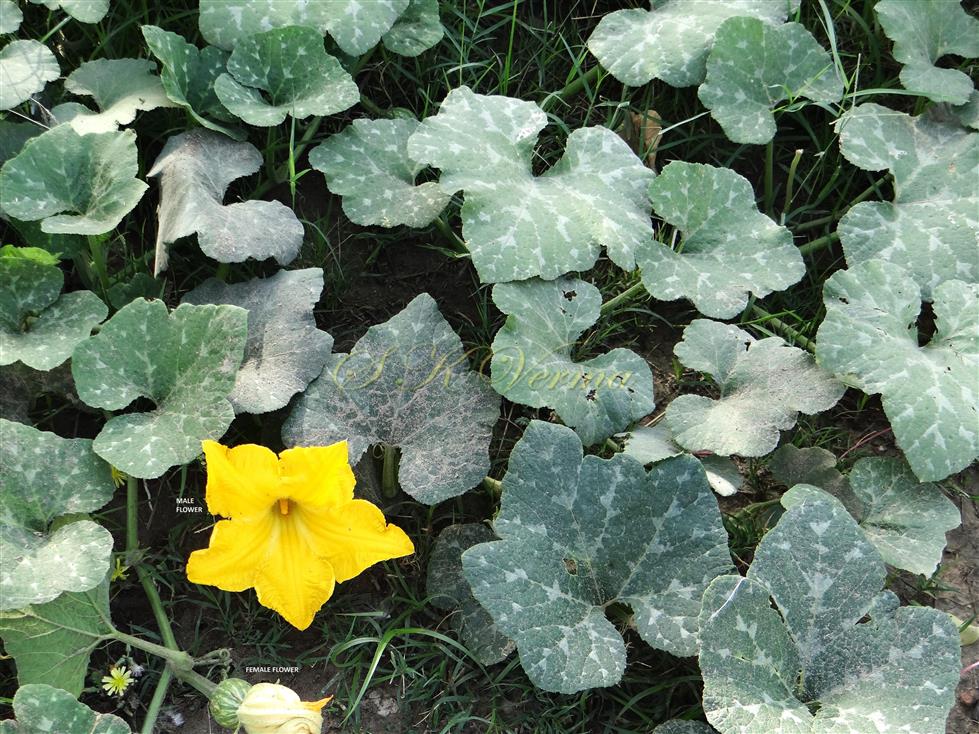
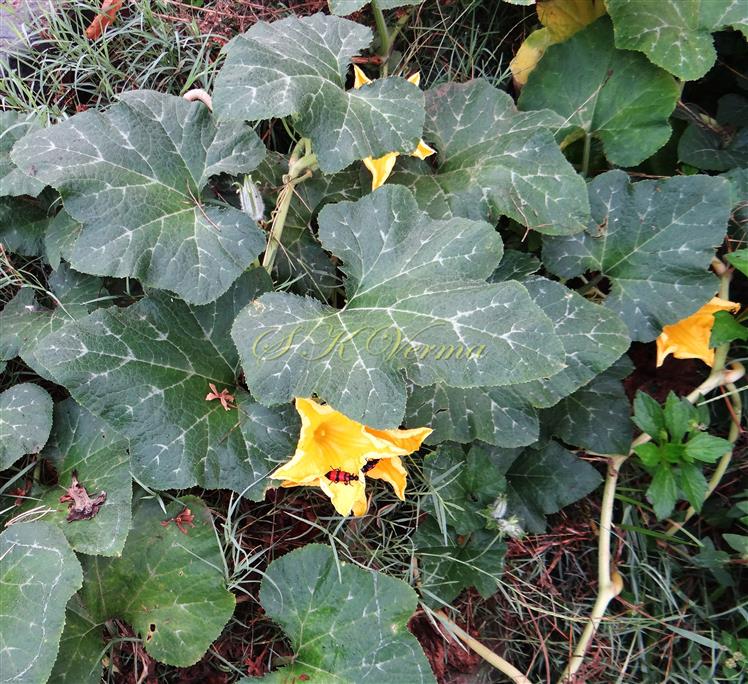
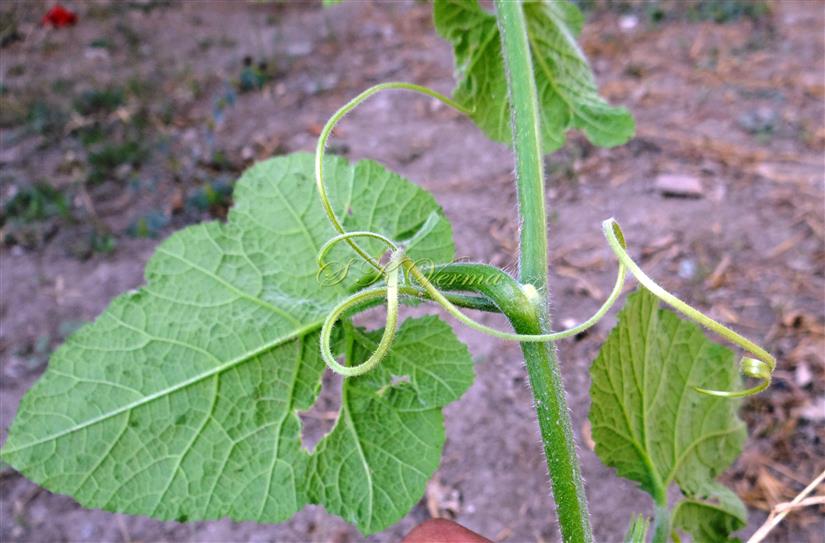
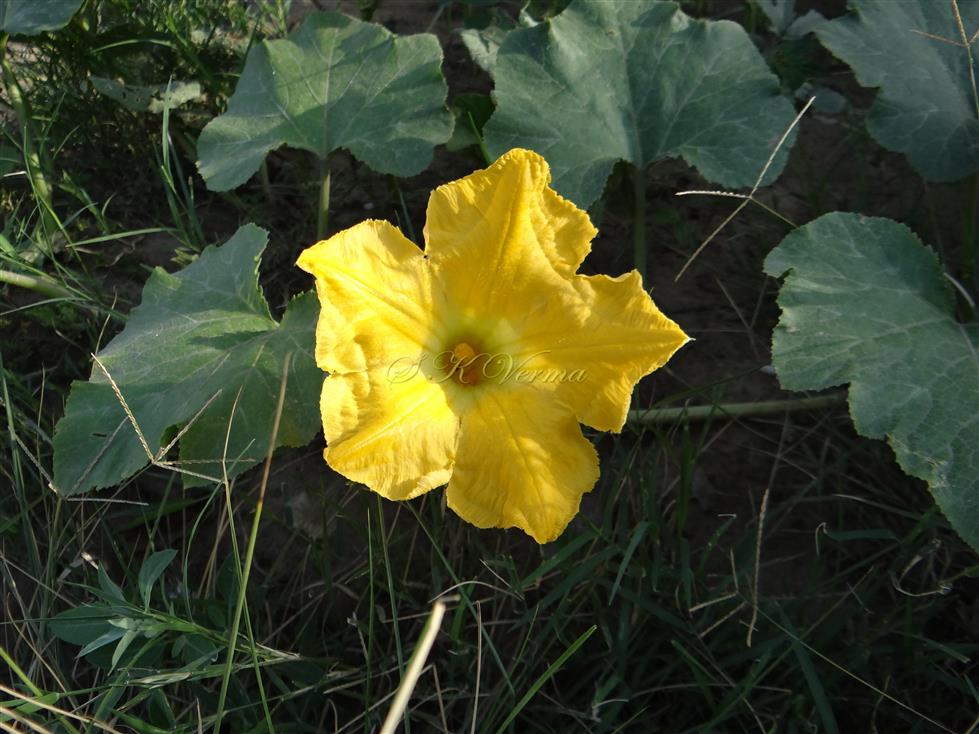
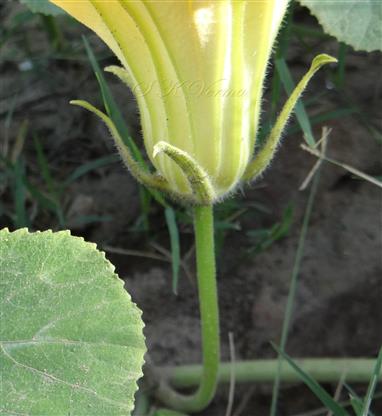
.jpg)

.jpg)
.jpg)
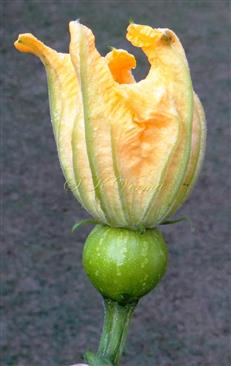
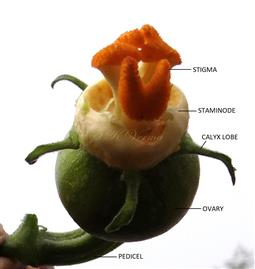
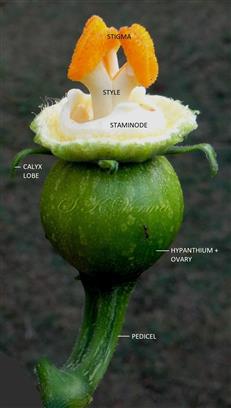
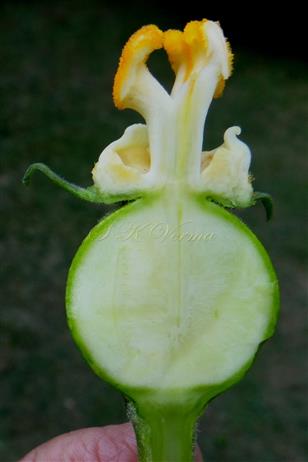
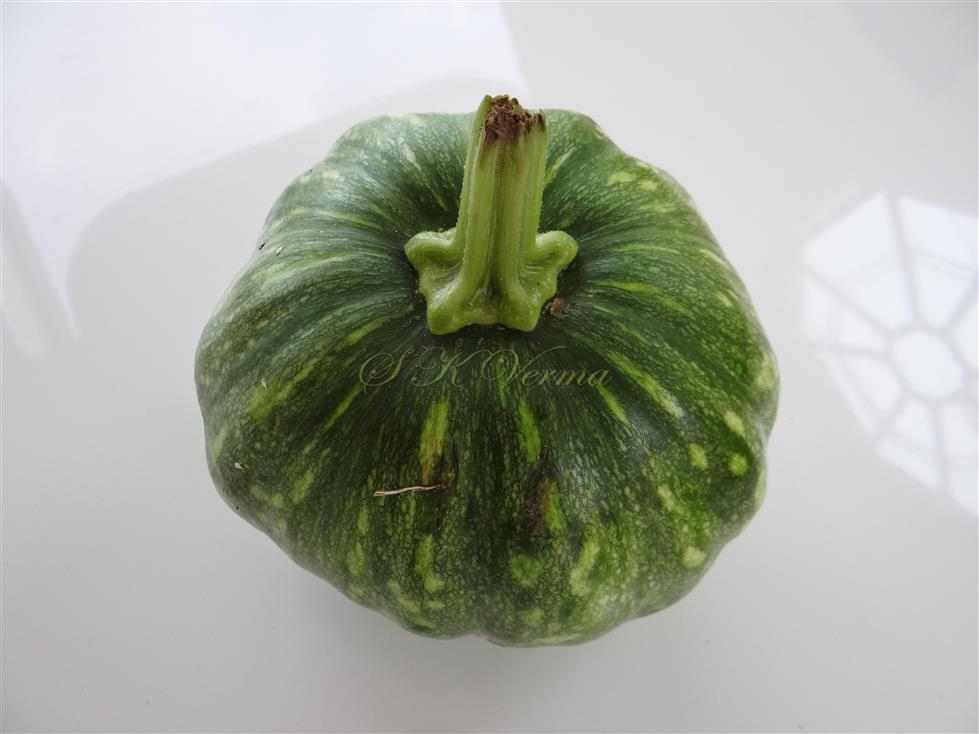






.jpg)

.jpg)
.jpg)




